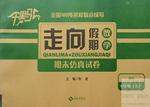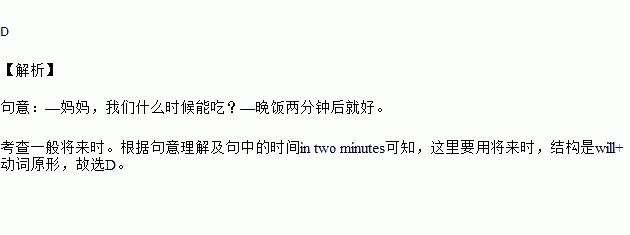题目内容
— Mum, when can we eat?
— Dinner ready in two minutes.
A.is B.was C.has been D.will be
 千里马走向假期期末仿真试卷寒假系列答案
千里马走向假期期末仿真试卷寒假系列答案阅读下面5小题的材料。请从A—F选项中选出符合各段意思的最佳选项。选项中有一项是多余选项。
A | Keep the places clean! | D | Learn about the places! |
B | Don't forget your camera! | E | Don't touch, don't climb, and don't pick! |
C | Be kind to others! | F | Come prepared! |
How to have a pleasant trip?
Traveling is becoming more and more popular. But how can we have a pleasant trip? Here are some tips for you.
1. Read up on the places of interest before you go, or pick up a guidebook(旅行指南) or audio guide when you're there. These things can teach you about the places of interest, and point out special things you might miss.
2. If you're visiting a natural place of interest, first find out whether you'll need good walking shoes or a raincoat. It's always a good idea to bring some food and water, too.
3. You may want to get very close to beautiful places or to pick a flower or two to take home with you. But remember, this can make future visitors not happy. Look for signs about what not to do, and when you are not sure, please don't touch!
4. People want to see the places of interest, not your candy wrappers! If there are not many trash cans, bring a plastic bag with you to carry your rubbish.
5. For many places, it's a good idea to take pictures. But check whether you are allowed to take photos before you start taking pictures. Some special places don't like visitors to take photos.

